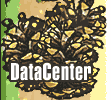The Bridgewater Green is a narrow strip of land oriented on a north/south axis in the center of Bridgewater. It is bounded by Route 133 on the west (the north-south corridor connecting Bridgewater with other communities); Center Street on the east; and Clapboard Road on the north. It is directly south of the Congregational Church located on the northwest corner of Clapboard Road and Route 133. It is the heart of the small crossroads community that has changed little since the end of the 19th century.
While the picturesque Greek Revival Church at the head of the green is the focal point of the community, the major activity takes place across from the green on Route 133 where the Village store is located. Built c. 1898 and the site of what is said to be the earliest mail order business in the United States, the Village Store serves as the post office, gas station and store. Next to it and served by the same gravel parking lot located in front of the buildings is a small bank (c. 1960). Although the bustle of activity generated by the only commercial buildings in town tends to overwhelm the narrow green across the street, it provides a feeling of liveliness that is lacking in many of the small crossroads villages that stopped developing in the 19th century.
The green is the focus for other religious and civic structures. A picturesque Gothic Revival wood frame Episcopal Church (c. 1859) is located diagonally across from the Congregational Church at the intersection of Hat Shop Hill Road and Route 133. To the south of it and next to the Village Store is the Grange Hall (c. 1854) which was built as a school with the town hall on the second floor. On the other side of the long green is the town hall (1904) and a 19th-cetury residence. In between them is a vacant lot where a store stood in the 19th century. This side of the green is rather quiet in contrast to all the activity taking place on the west side.
The green itself is dominated by its plantings. A large stone monument is situated in the center with bronze plaques on either side honoring those who fought in World War I and II. There are three mature deciduous trees and a large fir tree lighted every Christmas. A bench is at either end; the one on the north end is within a carefully maintained landscaped rock garden.






![]()